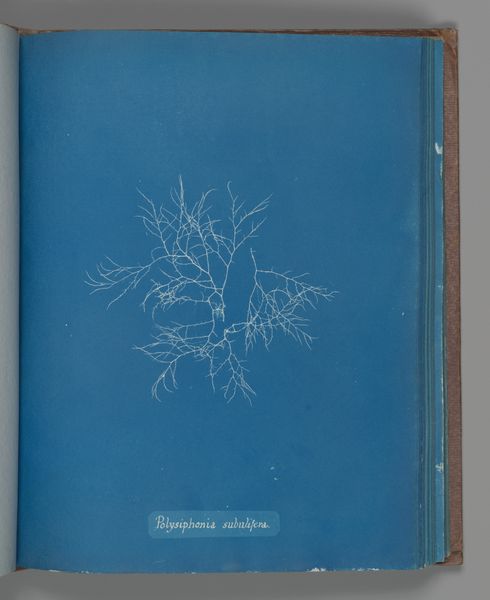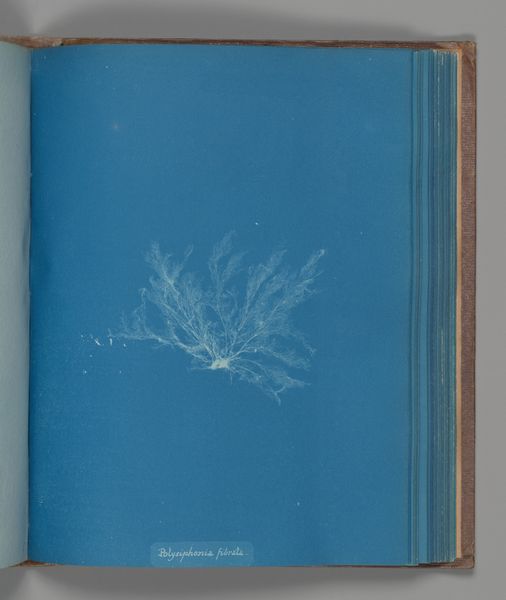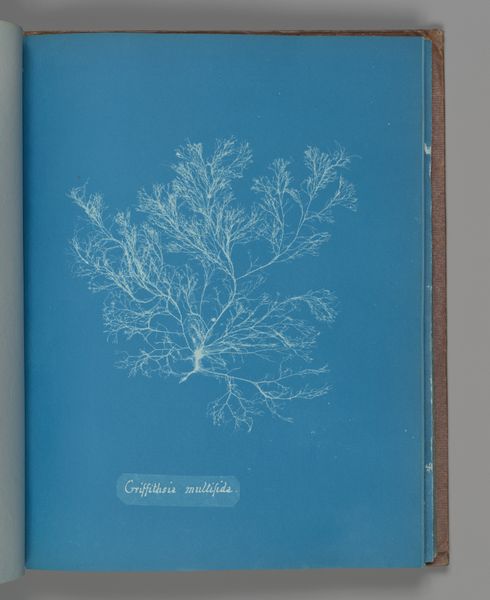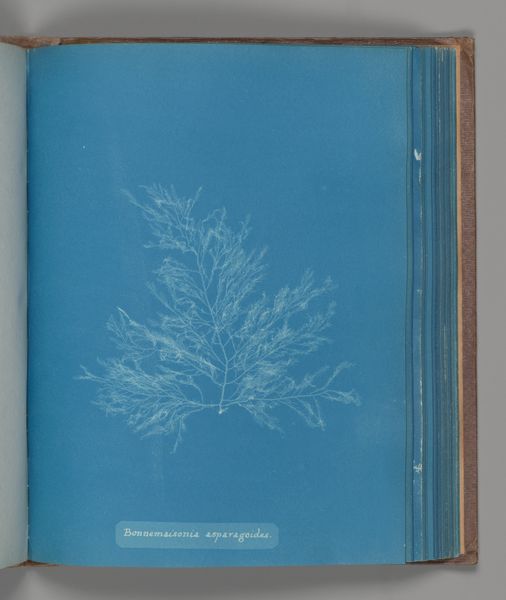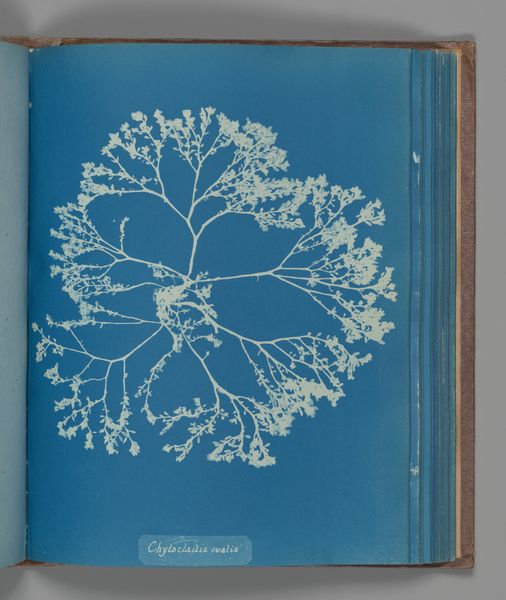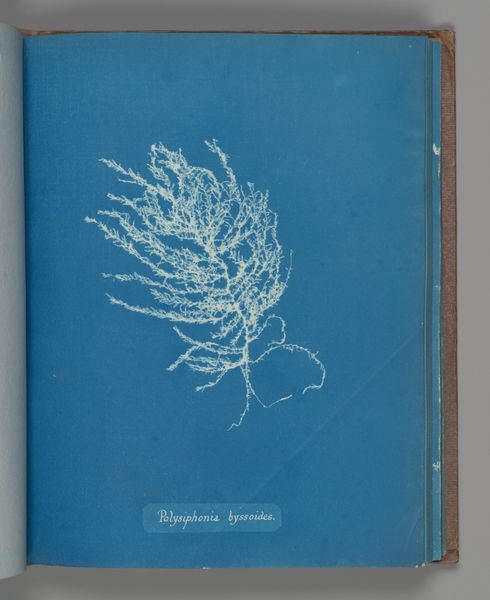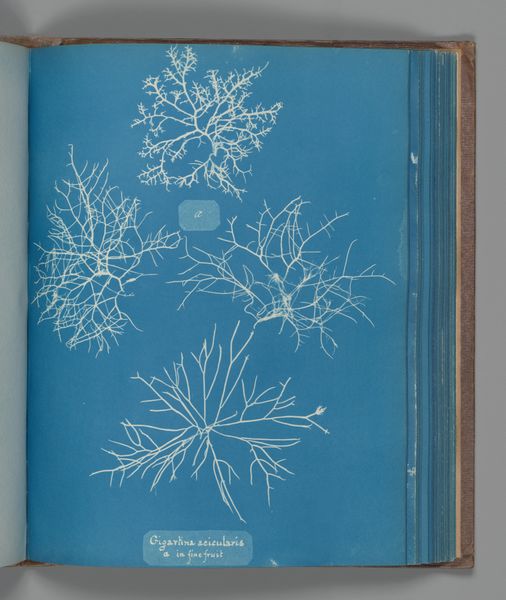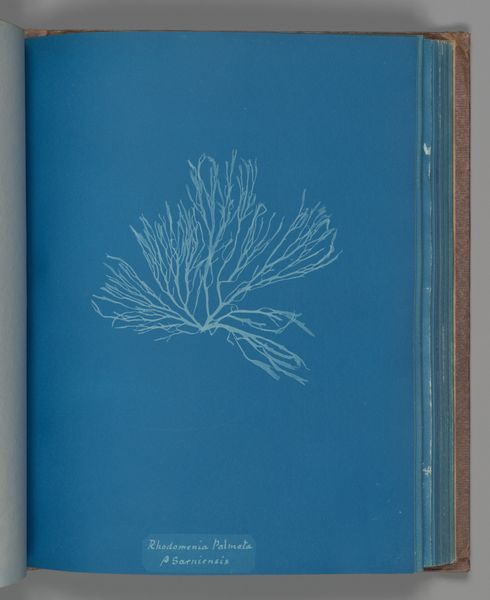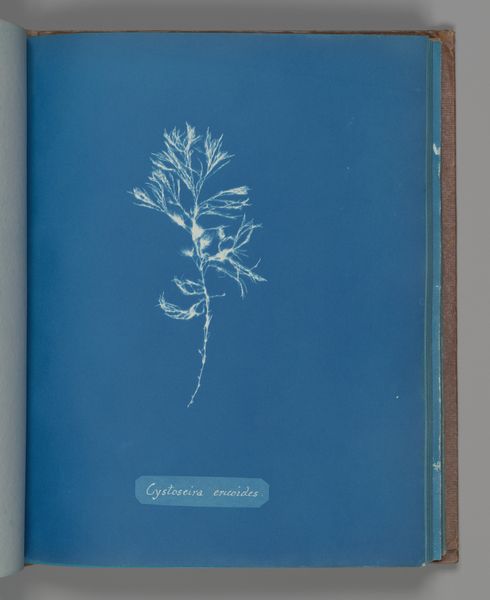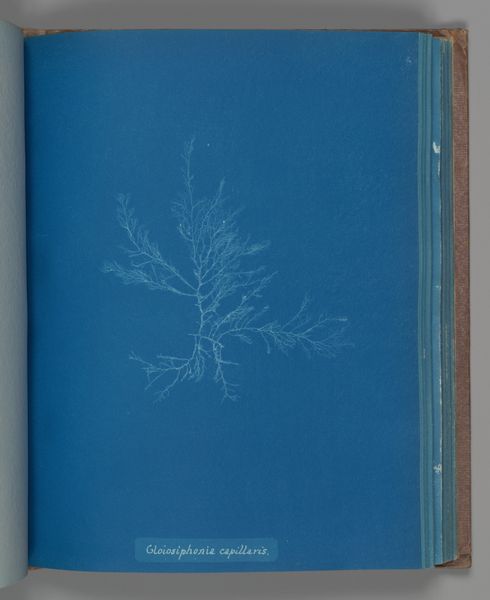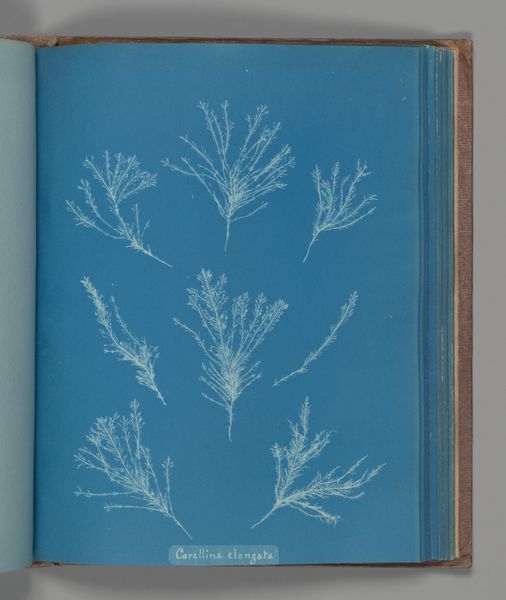
print, cyanotype, photography
# print
#
cyanotype
#
photography
Dimensions: Image: 25.3 x 20 cm (9 15/16 x 7 7/8 in.)
Copyright: Public Domain
Curator: Anna Atkins' "Ceramium rubrum, var.", created between 1851 and 1855, a cyanotype currently held in the Metropolitan Museum of Art. The stark white algae against the intense Prussian blue is striking. What catches your eye initially about this piece? Editor: The fine, branching structure of the algae is so delicate and detailed. I am curious to hear your take on it; what formal qualities do you find most compelling? Curator: The stark contrast between the subject and the ground is critical. Consider the composition: a filigree of form set against a solid plane of colour. The linear quality created by the cyanotype process itself— how does that inform our perception? Editor: It makes the algae seem almost ethereal, like a ghost. It’s fascinating how the medium enhances the form. Curator: Precisely. It eschews traditional artistic interventions of the hand, presenting itself as a scientific document. Is that all it is, however? Consider the visual experience. Does the artist's subjective engagement recede entirely, or is something else being conveyed? Editor: It feels intentional, not purely clinical. Maybe an appreciation for the beauty of its form, even in its scientific rendering? Curator: Indeed. This blend of science and aesthetics marks a novel shift, and establishes formal vocabulary which might be understood in photographic prints of a much later era. Its abstraction hints at patterns only later decoded into binary code. What do you make of this dialogue now? Editor: I see now how form and process are so intertwined here; they drive its overall impact. Thank you for guiding me to this insight. Curator: You are welcome; observing structure opens infinite perspectives!
Comments
No comments
Be the first to comment and join the conversation on the ultimate creative platform.
